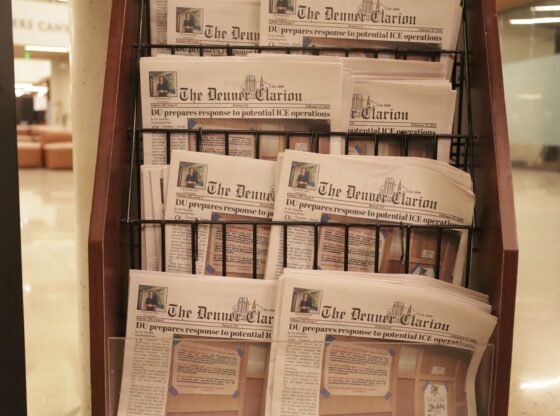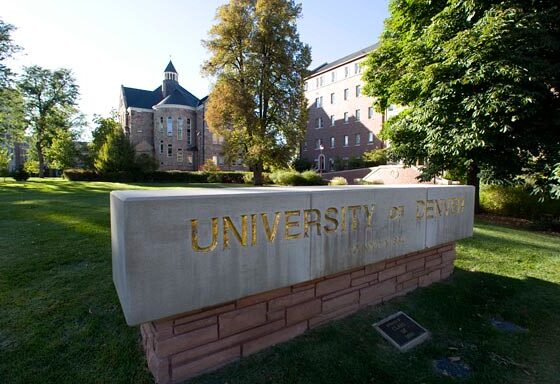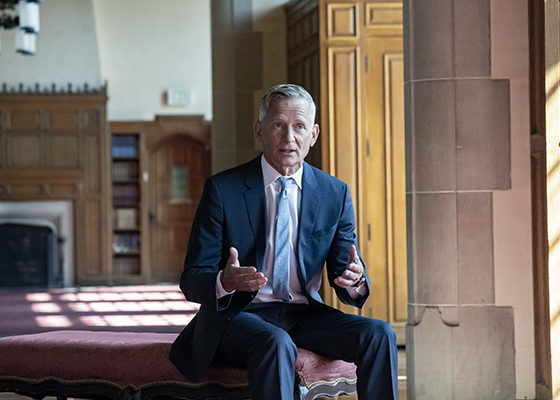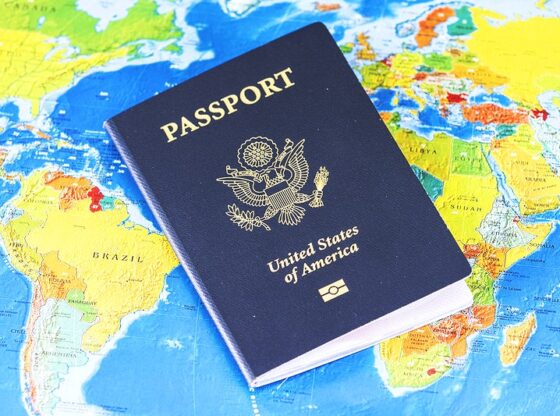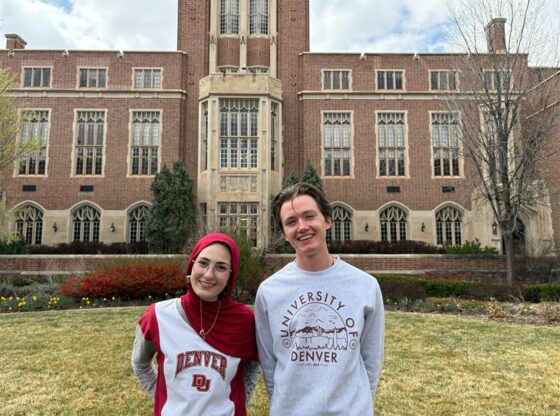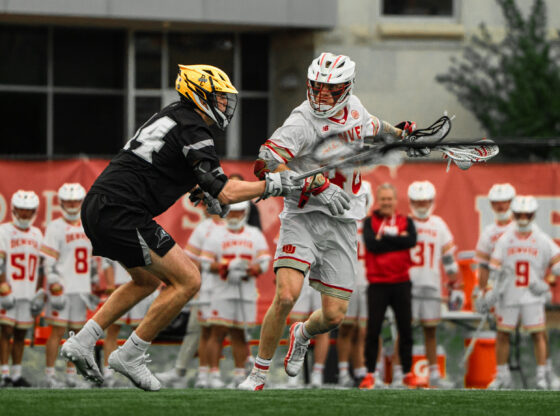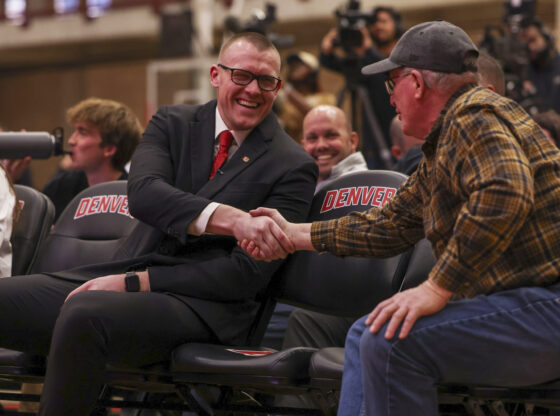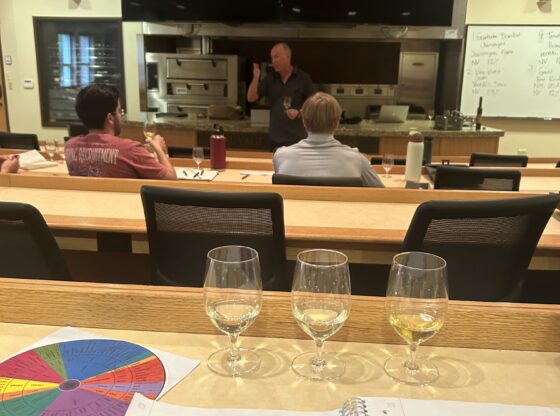The clock strikes 2 a.m. and the pressure to convert reaches its peak for Ray Gottfried and his crew as they work their magic on the floor of a deserted Magness Arena.
But don’t expect to read or hear about a game-winning slap shot or a mid-court buzzer beater from the efforts of one of the brawny members on this team.
Instead, anticipate the opportunity to identify and appreciate the planning and production of the playing surface at every Magness Arena sporting event.
Gottfried, the Magness Arena conversion manager, leads four full-time employees and about 12 additional workers through the tedious and often times unappreciated task of switching out the floors and seating for basketball and hockey.
“We usually start between 10 p.m. and 12 a.m. and sometimes the guys go two weeks without a day off,” said Gottfried.
The ice is the one constant in the entire process as it stays put all season and the other playing surfaces rest on top of it.
During basketball season, the crew puts down the basketball floor every Tuesday night and it usually stays down until Thursday night.
First the team dry cuts the ice with the Zamboni, which allows the crew to walk on the ice without slipping or falling.
Each Zamboni can hold up to 3,000 pounds of natural gas and one is equipped with a 305 Chevrolet engine and the other has a 350 Chevrolet engine.
Next, 535 sheets of a lightweight composite material called arena deck are rolled out and placed on the ice and under the basketball court.
These sheets, which cost $250 each, take away the feeling that ice is below you and prevent the release of coldness.
After a forklift with suction cups removes all of the glass, it is time to bring out the solid maple basketball court.
“It is 75 pieces of wood and they interlock like a puzzle in rows,” said Gottfried. “It goes rows A through O and it takes us about two hours and eight people to lay the floor down.”
Four people are required to lift each panel and the total weight of the seven-year-old floor is 64,000 pounds.
Gottfried estimates the floor can be put to use for one more year.
“It wasn’t made for as many conversions as we do because it was made for the Final Four,” said Gottfried. “We have had it repaired and repainted every year and we can’t sand it anymore because you can only sand hardwood so much.”
Each year a floor is made and donated to the NCAA Final Four. After the tournament, certain arenas are permitted to bid on the floor.
The DU basketball floor was purchased from a bid after the 1998 Women’s NCAA Final Four in New Mexico.
“The trick to converting is you reverse the procedure exactly the way you put it in and everything goes in storage that way,” said Gottfried. “So the first piece out is always the last piece in.”
Seating configuration must also be addressed when converting from hockey to basketball and vice versa.
“When we do basketball, we build bleachers out in front of the dasher wall that come out to the edge of the court,” said Gottfried.
The dasher wall is the support system that is used in hockey as well as indoor soccer fields.
“We take the chairs off and collapse the bleachers and then we float them on air because they weigh 16,000 pounds a piece,” said Gottfried. “We pull them out, spin them, and stick them back in, then the chairs come out over the dasher wall and connect to the bleachers in front to make it seamless seating all the way up.”
Gottfried and his staff also play a pivotal role when it comes to home advantage, especially in hockey.
“Like I tell George, ‘We are making you championship ice. Now all they have to do is uphold their end,'” said Gottfried. “We provide them with good quality ice which helps them skate faster.”
The ice is changed out once a year in August, as it is chopped apart and then disposed of.
After realigning everything to NCAA specifications, they sub freeze the floor and spray water onto it, which freezes instantly.
With a thin coat of ice down, the crew paints the floor with super-white ice paint and seals the floor once again with reverse osmosis water.
The reverse osmosis water is 100 percent pure water, homemade and allows for ice clarity and the ability to read the logos and lines painted on the ice.
The entire process, which takes 10 days, is completed once all of the additional lines are hand painted in.
“The trick to ice is you have to heat it up, so we lay down really hot water when we make ice and it percolates the air out of it,” said Gottfried. “It turns into really hard ice. It doesn’t chip. It is pliable and we can tell by the skate marks how the ice is doing.”
Perhaps the biggest perk of the job for the men is working backstage at all of the concerts and eating with all of the bands and performers.
Gottfried even decided to have a little fun with Prince after he found out that the performer hates eye contact.
“We made it a point to have eye contact with him just to upset him,” said Gottfried. “But before I came here I was on tour with Michael Jackson and Bruce Springstein. I was in charge of the stages, so I would fly three days in advance and set up the stage. We would do a two hour concert and tear it all down.”
So the next time Rodney Billups converts a fast break layup or Luke Fulghum cuts on a dime, remember the boss and his crew that moon walk their way to playing surface perfection every day.



